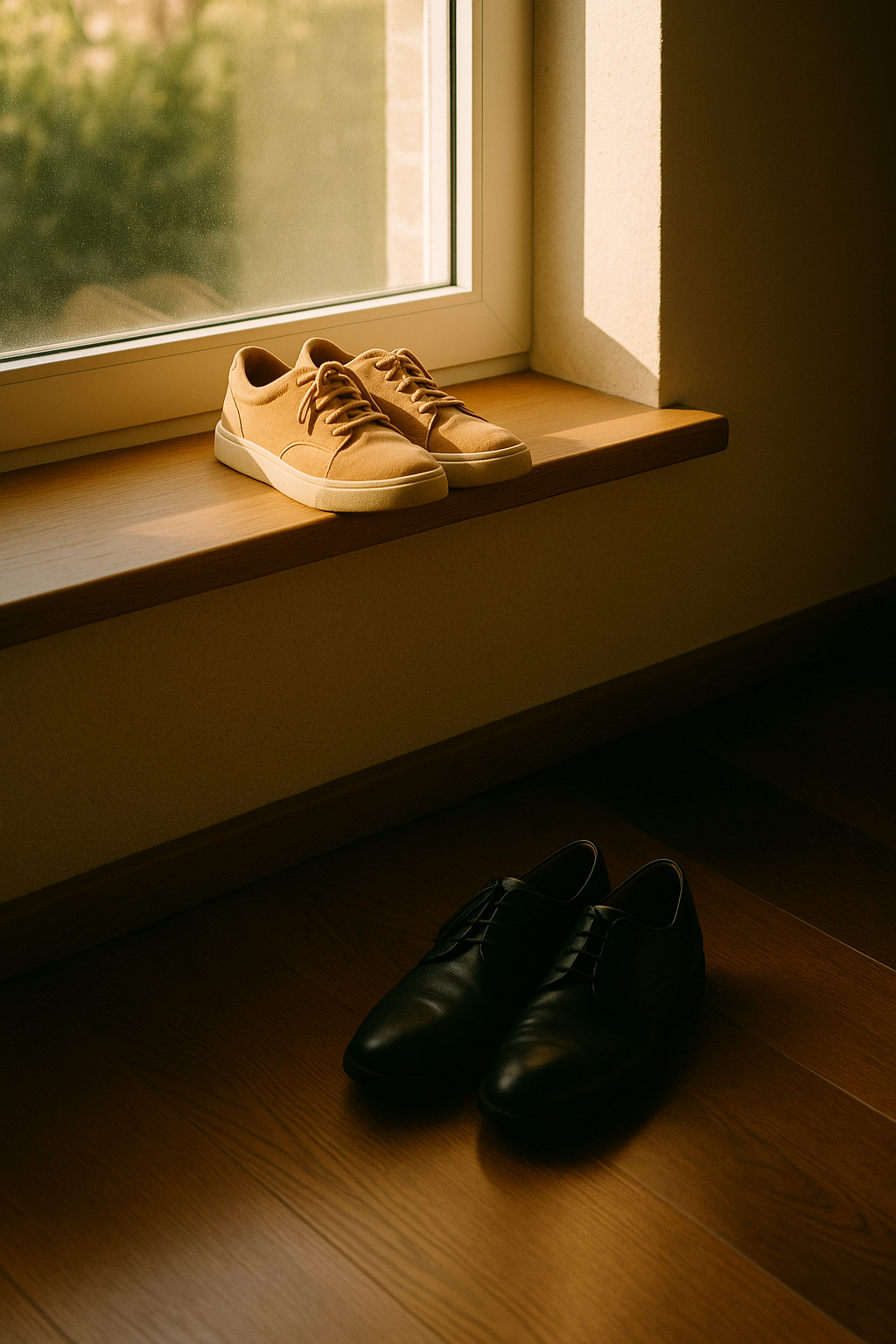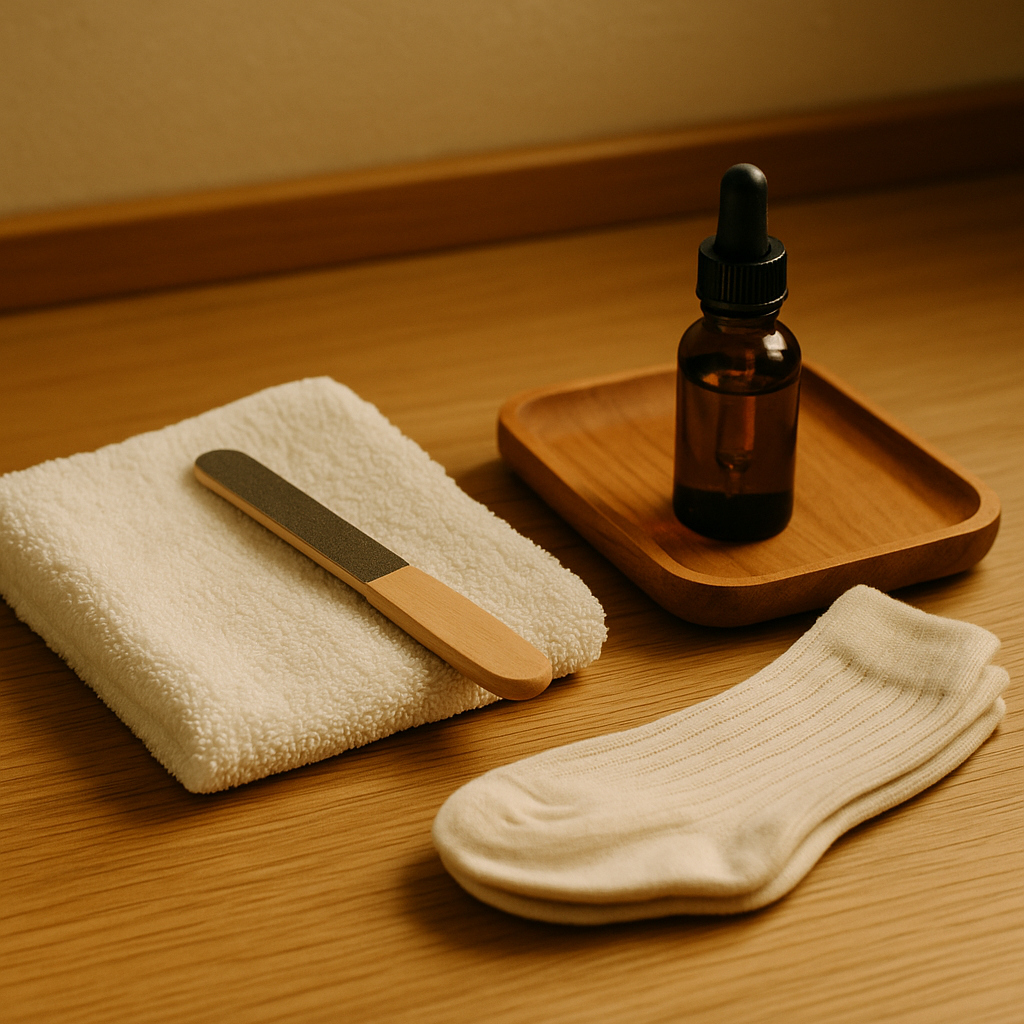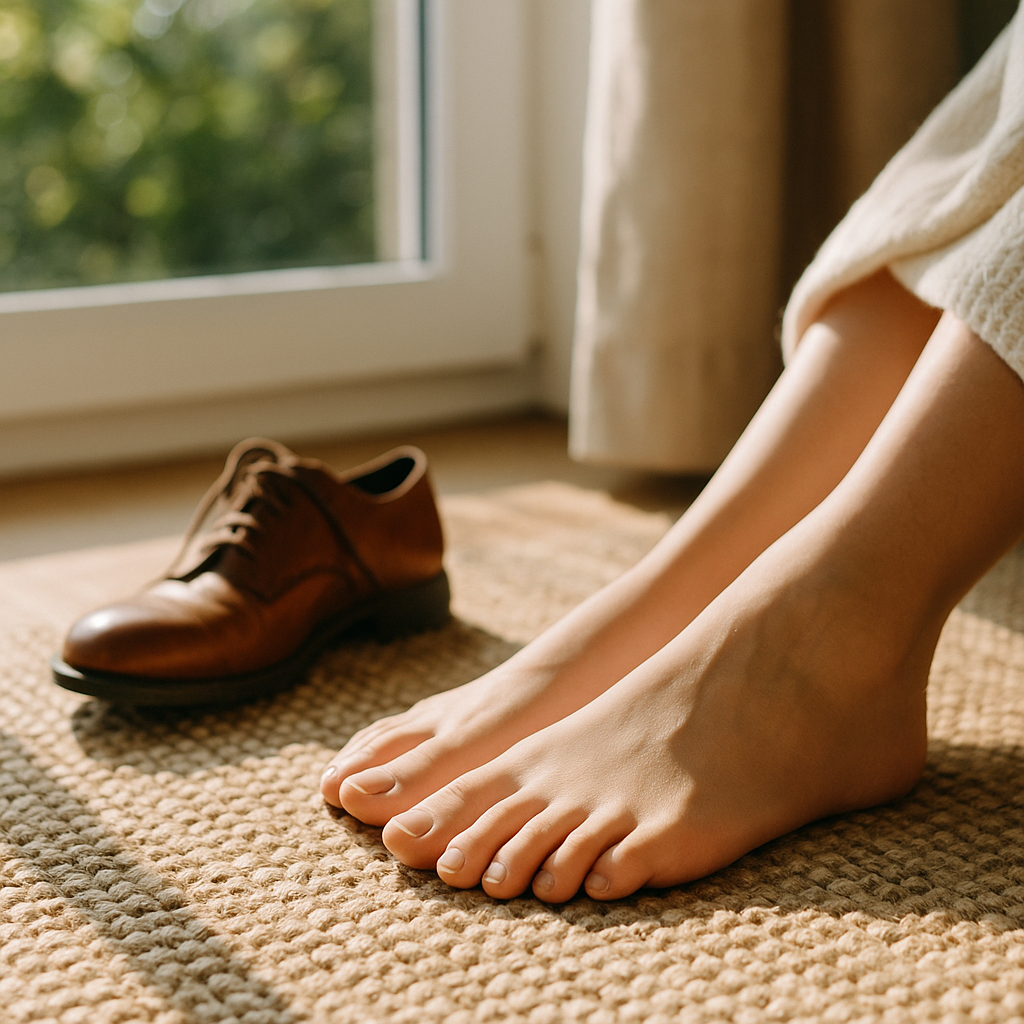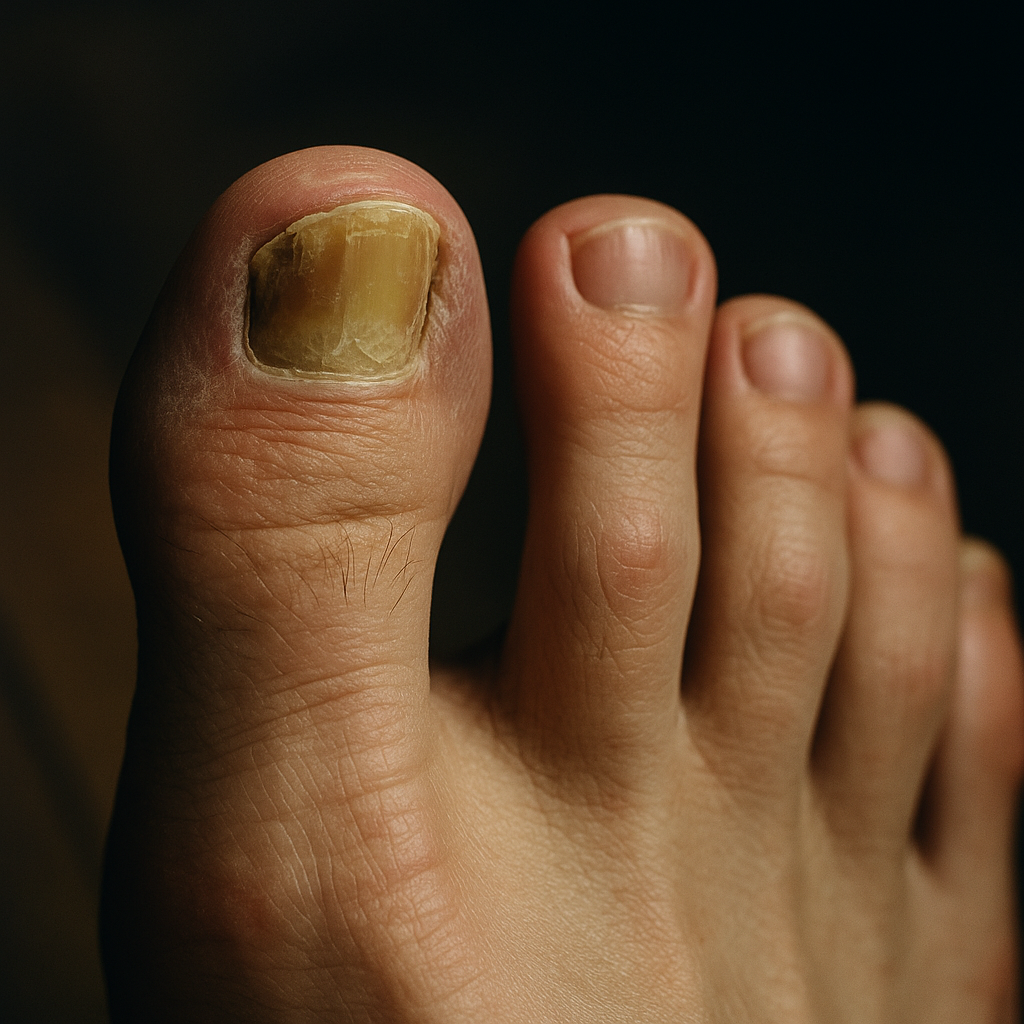Why This Can Happen
Nails aren’t lifeless shields they’re layered structures that grow slowly, trapping whatever settles beneath them. Fungi slip into tiny cracks or weak spots and then build biofilms protective layers that act like bunkers. Once that fortress forms, ordinary scrubbing or creams often bounce off.
At the same time, your nails and skin carry their own microbiome a mix of bacteria and harmless fungi. When it’s balanced, invaders struggle to take over. But when that balance tips from tight shoes, damp socks, or small injuries one aggressive fungus can push the rest aside. That’s when nails start thickening, yellowing, or itching.

Gentle Advice That Usually Helps
Tip 1: Give Your Nails More Breathing Space
Fungi adore dark, airless corners.
- Rotate shoes daily so each pair has time to dry.
- Choose socks that wick moisture instead of trapping it.
- Go barefoot at home now and then, letting light and air reach your nails.
Start today: Slip your shoes off after work and give your toes a few minutes of open air before evening socks or slippers.
Tip 2: Disrupt the “Fungal Fortress”
Biofilms are like sticky shields. You don’t need harsh chemicals, but you can make life harder for them.
- A gentle weekly filing of thick nail surfaces reduces their cover.
- Short soaks in warm water with a splash of vinegar shift pH, softening buildup.
- Wiping nails dry immediately after bathing denies fungus the lingering dampness it loves.
Start today: Keep a small file in the bathroom and smooth the nail surface lightly once a week.

Tip 3: Protect the Neighborhood Around the Nail
Strong surrounding skin makes it harder for fungus to spread.
- Keep feet clean with mild soap (skip harsh antiseptics daily they strip helpful microbes too).
- Moisturize lightly to avoid cracks where fungi can sneak in.
- If nails feel itchy, apply a cool compress or chilled cloth for temporary relief.










